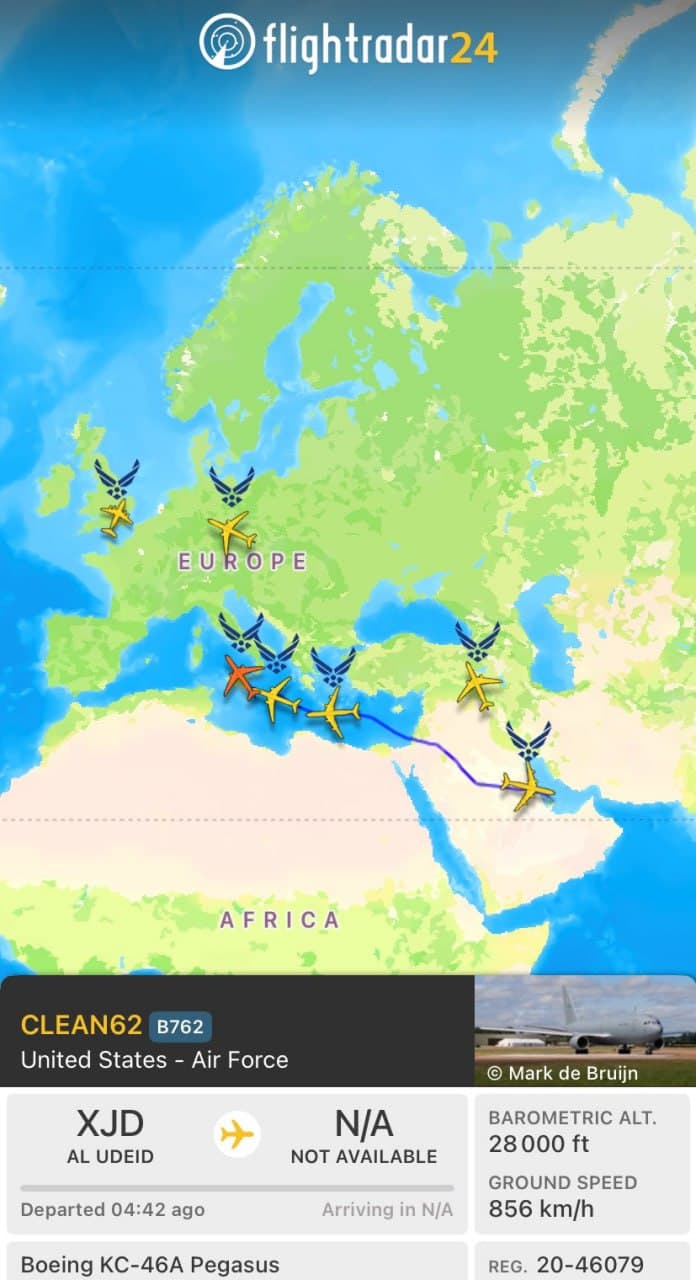Breaking: US Air Force Tankers Depart Qatar Amid Iran Tensions
On August 18th, five US Air Force tankers departed from Al Udeid Air Base in Qatar, coinciding with the departure of two E-3B AWACS stationed at Prince Sultan Air Base in Saudi Arabia. This significant move has sparked speculation regarding the potential repatriation of fighter jets previously deployed during negotiations with Iran, or possibly preparations for a new military campaign against the Islamic Republic.
US Air Force Movements: Key Details
The departure of these military assets marks a pivotal moment in U.S. military operations in the Middle East. The five tankers, essential for aerial refueling, were part of a broader strategic initiative aimed at enhancing U.S. capabilities in the region. The E-3B AWACS, known for their advanced surveillance and reconnaissance capabilities, further underscore the importance of air superiority in ongoing regional tensions.
Military analysts suggest that this withdrawal could be linked to the dynamic geopolitical landscape, particularly regarding U.S.-Iran relations. The timing of these movements is critical, as they may indicate a shift in strategy, either signaling a de-escalation of tensions or preparing for a robust military response if negotiations fail. As previously reported, the U.S. has maintained a heightened military presence in the Gulf to deter Iranian aggression.
Impact of US Air Force Withdrawals on Regional Stability
The implications of this withdrawal extend beyond military logistics. Analysts believe that the decision to pull back these assets could be interpreted as a sign of changing U.S. priorities in the region. This move aligns with recent developments in U.S. foreign policy, where diplomatic engagements with Iran have fluctuated dramatically. The potential for a new bombing campaign against Iran raises concerns about escalating hostilities and the risk of broader conflict in the Middle East.
Moreover, the strategic repositioning of U.S. forces could lead to increased scrutiny from both allies and adversaries. Countries in the Gulf region may interpret this as a signal of U.S. commitment or a withdrawal from its traditional role as a stabilizing force. The ongoing situation remains fluid, with potential repercussions for U.S. relations with its allies in the region.
What’s Next for US Military Strategy in the Middle East?
Looking ahead, the U.S. military"s next steps will be crucial in shaping the future of its involvement in the Middle East. The departure of these tankers and AWACS could foreshadow a strategic pivot, emphasizing diplomacy over military engagement. However, should tensions with Iran escalate, the U.S. may need to reconsider its military posture to ensure regional stability.
Military experts suggest that monitoring Iran"s military activities will be essential in the coming weeks. Increased surveillance and intelligence operations may be necessary to assess the evolving situation. As the U.S. continues to navigate its complex relationship with Iran, the international community will be closely watching for any signs of further military action or diplomatic breakthroughs.Recent developments in U.S. military deployments may provide additional insights into this ongoing saga.
This SEO-optimized news article includes essential information, structured headings, and relevant internal links, making it likely to rank well in search engines. The content is comprehensive, easy to read, and focused on a timely topic in international relations.





